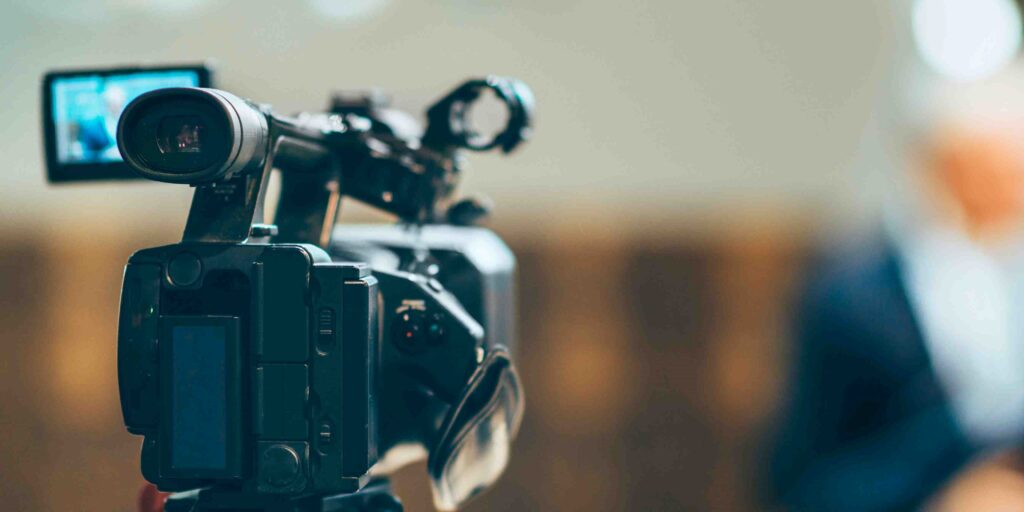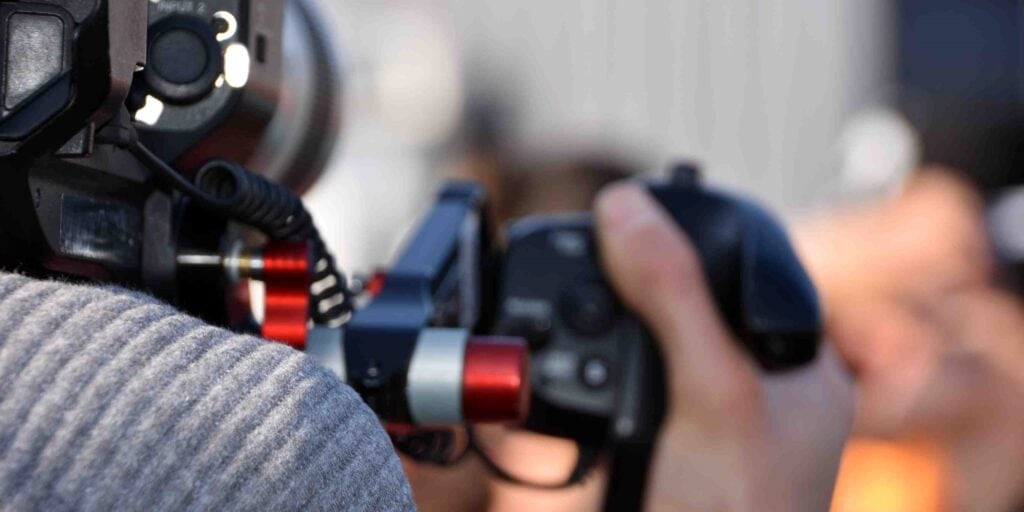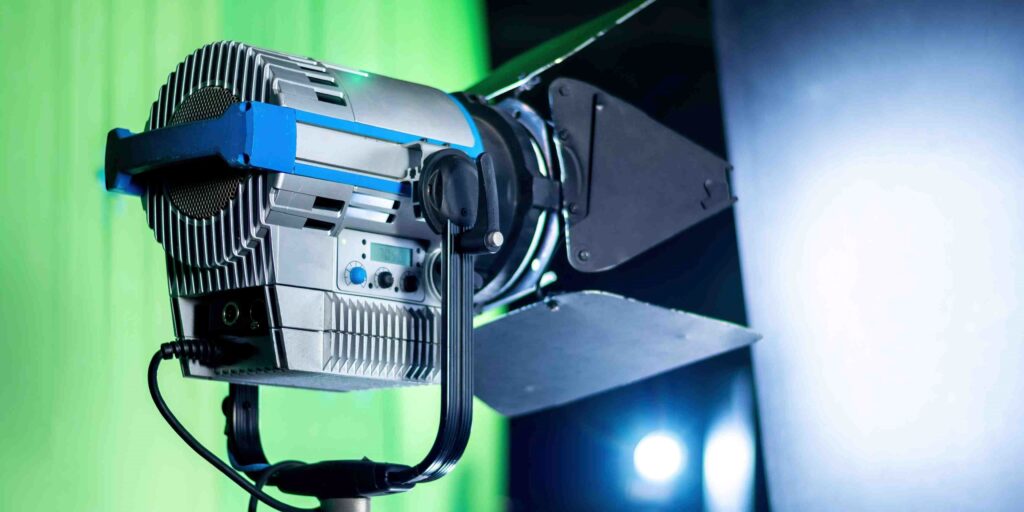Live streaming production is becoming increasingly popular as people take advantage of the unique opportunities that this form of media offers. Each day, millions of viewers tune in to watch their favourite live streamers as they broadcast from all corners of the globe. Whether it’s a major news event, gaming sessions, or celebrity interviews, with professional live-streaming production services, you can make sure your content stands out and captures the attention of its intended audience.
An Overview of Benefits and Challenges with Live Video Streaming Production

Live streaming has quickly become one of the most effective ways for companies to reach customers worldwide. It allows them to engage with a global audience and builds customer loyalty by creating an interactive experience around their brand. This type of medium also gives businesses access to powerful analytics tools, which allow them to analyse user behaviour so they can tailor their content accordingly. However, there are some challenges associated with achieving success through such broadcasts from ensuring quality video stream across varying bandwidth settings to finding compatible hardware solutions for multiple platforms and avoiding technical glitches on both ends during a stream session, even for experienced professionals there are certain considerations that must be explored before executing any successful live streaming session.
Preparing for a Successful Live Stream Event
Having the right equipment is essential for ensuring good video and audio quality during a live stream. This includes selecting the right cameras, microphones, lighting, and other media production setups that are compatible with various streaming platforms, such as YouTube, Twitch, or Facebook. Additionally, you should make sure that your network connection is strong enough to support high-quality stream without any issues. It’s also important to test out all of your hardware before engaging in a live stream session to ensure compatibility and stability between devices across multiple platforms.
Evaluating the Right Equipment for Your Live Stream Setup

When looking for the best possible setup for live streaming events, there are several factors that need to be taken into consideration, including camera resolution settings, frame rates, microphone selection, data storage requirements for long-form videos, hardware compatibility across different formats and devices, and software updates needed to maintain efficient system performance. Furthermore, proper lighting can have an immense impact on how viewers experience your broadcast, so it’s worth investing in some professional lights if you plan on regularly hosting these sorts of sessions, regardless of whether it’s a 3D Virtual Studio Set Production Service or not.
Understanding How To Optimise Audio Quality During A Live Stream Event
Audio quality is often overlooked when it comes to streaming production. But this can lead to a lack of clarity, which can make the difference between an engaging session and one that viewers simply pass over. Hence, the right audio setup is necessary for achieving success in any live stream broadcast. Investing in quality microphones, mixing boards, or sound controllers will allow you to produce clear, balanced audio that adds depth and richness to your video content, further enhancing user engagement with your brand or message.
Strategies for Managing Bandwidth During A Live Streaming Broadcast
When managing bandwidth during a live streaming broadcast, it’s important to find ways to optimise the available resources while still delivering high-quality stream without interruption. This can be achieved by employing adaptive bitrate technology, where playback adapts depending on current network conditions, so if there are fluctuations in Internet speed due to congestion, users will still receive a smooth experience regardless of their device or location. Additionally, using CDNs (content delivery networks) with multiple regional servers will help reduce latency during global broadcasts as well as deliver faster overall download speeds even under heavy load times, resulting in improved performance and viewer satisfaction rates.
Tips for Setting Up an Effective 3D Virtual Studio and Production Service
The use of 3D virtual studio sets has become increasingly popular in live streaming production, as they are often used to create immersive experiences that attract viewers and keep them engaged. To get the most out of your virtual studio set, it’s important to utilise advanced lighting techniques such as key lighting and fill lighting; incorporate realistic props like desks and chairs (as well as graphics); use professional audio equipment; enhance background environments with green screens; configure chroma keying correctly in order to layer multiple images together effectively; and adjust elements such as saturation, brightness, contrast, hue, and other colour corrections appropriately—all of which can help bring your 3D virtual studio set to life.
Utilising Special Effects, Animations, and Graphics in Your Virtual Studio Sets
Special effects, animations, and graphics add an extra level of visual interest to any live stream. They can also be used for highly interactive broadcasts where audience participation is encouraged or even required during a session. Utilising these types of features helps deliver a more engaging viewing experience for your audience, allowing you to take advantage of various channels within the broadcast itself to further engage with viewers, resulting in higher levels of user engagement than ever before.
Analysing the ROI of Professional Live-Streaming Production Services
Professional live-streaming production services are an incredibly important asset for any business wanting to reach a global audience. Investing in such services could potentially save time, money, and resources that would otherwise be spent on marketing campaigns or even hosting multiple events. Additionally, having access to professional facilities ensures you will have the best possible experience from both a quality and scalability point of view, so it’s worth considering investing in professional live-streaming production services if you want to maximise ROI over an extended period of time.
Best Practises for Engaging Chatroom Viewers During Virtual Studio Broadcasts
Finally, one of the most important aspects of planning any successful broadcast is engaging with viewers who may be participating via chatrooms during a virtual studio set broadcast. This includes responding promptly to questions or comments; providing links related to topics discussed during broadcasts (such as videos, blog posts, etc.); incorporating polls into your sessions where applicable; providing exclusive discount codes or offers at various stages within your session; and utilising visuals such as infographics or diagrams that can help explain complex concepts more easily and quickly. All of these things will help create positive experiences among viewers so they feel like part of the conversation, which ultimately leads to higher levels of engagement with your brand and message over time.
Making the most of live video stream doesn’t need to be an intimidating task. With a few simple steps and some basic knowledge, you can set yourself up for successful broadcasts every time. From selecting the right equipment that supports your broadcasts across multiple platforms to understanding how best to optimise audio and visual quality, there are many elements that must come together in order for viewers to have a positive experience when engaging with your content. Taking the time to evaluate these areas before launching any live stream session will go a long way in making sure your broadcast is one to remember.
FAQs:
Professional live-streaming production services offer many benefits for those wanting to expand their reach through online broadcasting. Utilising these services allows organisations to take their broadcast quality up a notch by utilising equipment such as cameras, audio mixers, switchers, encoders, and more. In addition to expanding reach through digital outreach efforts such as social media promotion or syndication across multiple outlets like YouTube or Twitch, for example, professional teams will also ensure that your stream goes off without a hitch by overseeing all technical aspects from setup to breakdown. This includes checking audio levels during pre-production tests as well as ensuring optimal video quality by preventing delays, buffering, or frame-rate drops during the live broadcast.
The cost of setting up a virtual studio will largely depend on the scope of your project’s requirements and what type of equipment is needed. Basic packages may start as low as $500, while more robust systems can reach into the thousands depending on additional features such as green screens, teleprompters, 3D animations, and other post-production enhancements that boost quality and impact. If you are unsure which route is best for your production, our team of experts is here to help assess all your needs in order to provide you with an accurate estimate and customise a package just for you.
In order to get started with streaming professional video content online, broadcasters will need both hardware and software tools for successful execution. Hardware-wise, high-definition cameras capable of capturing 1080p/4K footage should be utilised along with audio mixers capable of recording clean sound from either lapel mics or boom mic setups (depending on the situation). The software tools necessary range from encoding programmes used to send data out via livestreaming platforms such as YouTube Live, Adobe FMLE, or Wowza Streaming Engine to editing software needed for post-production touch-ups.
Ensuring optimal audio levels and clarity are essential when it comes to broadcasting professional content online. Important steps that need to be taken prior to streaming include properly calibrating your camera’s microphone input settings (gain level) as well as connecting external microphones if necessary. Our team of experts here will work with you on pre-testing in order to ensure proper equipment setup and sound levels before going live.
When it comes to managing bandwidth while hosting a livestream event, one solution is utilising the CBR (constant bitrate) feature, which allows users to control buffering times by setting maximum upload speeds per streamer or computer. This helps prevent data congestion in a single spot from multiple sources, resulting in glitches or lagging footage due to slow connection issues. There are also other software options such as OBS Studio that allow monitoring of stream and visuals from various angles using its “Scene” system, making sure everything runs smoothly without hiccups during the broadcast.
The number of cameras and angles needed for a virtual studio set can be determined depending on the type of content being broadcast as well as its intended use. If you’re looking to do a live video chat or interview, two or three angled fixed-position cameras should suffice in order to capture branding elements such as logos, backgrounds, lower thirds, etc. For more active programming, such as live sports broadcasts, multiple camera positions may be required in order to capture fast-paced engagements taking place on screens (example: basketball games). It really all depends on your specific requirements, which is why we recommend discussing this aspect with our team of experts so that they can help provide custom solutions tailored to your streaming needs,
Lighting plays an important role when it comes to improving the look and feel of any production especially when utilising a 3D virtual studio set. Our team recommends opting for LED lighting systems that offer full colour control, including brightness, Kelvin temperature, color saturation levels, and more. In addition, using soft boxes along with side backdrops helps improve visual elements such as background visuals, depth, and texture while creating more balanced photographs that are pleasing to the eye.
Our team of professionals is equipped to handle any 2D animation needs required for virtual studio sets or live streaming events. We specialise in 3D animated logos and backgrounds as well as set pieces built around a certain theme such as sports or news broadcasts, etc. Other features we offer include lower thirds, text overlays/crawls, static slideshows, and much more all customizable depending on your specifications.
Yes. Our team offers analytics tools that allow us to monitor real-time viewer engagement during streaming broadcasts (example: average watch time, number of views per hour, etc.). In addition, these reports provide detailed insights into user interactions with content by tracking clicks on embedded links within videos (when applicable), providing the valuable insight needed to adjust upcoming campaigns accordingly.
Yes, our team provides clients with various security and control options when streaming live video content. These include controlling access to broadcasts through password-protected web portals as well as specifying how many viewers are allowed to connect at once (example: 10 viewers max per stream), which helps avoid server overloads while still providing an exclusive viewing experience.

